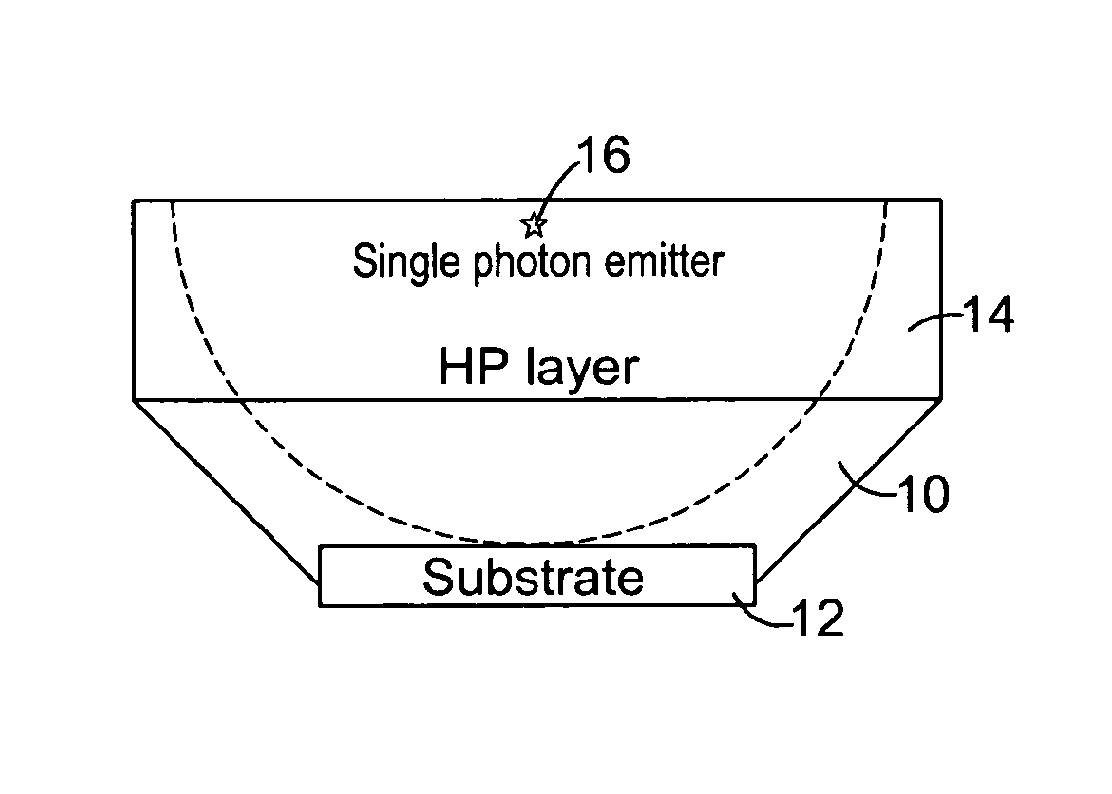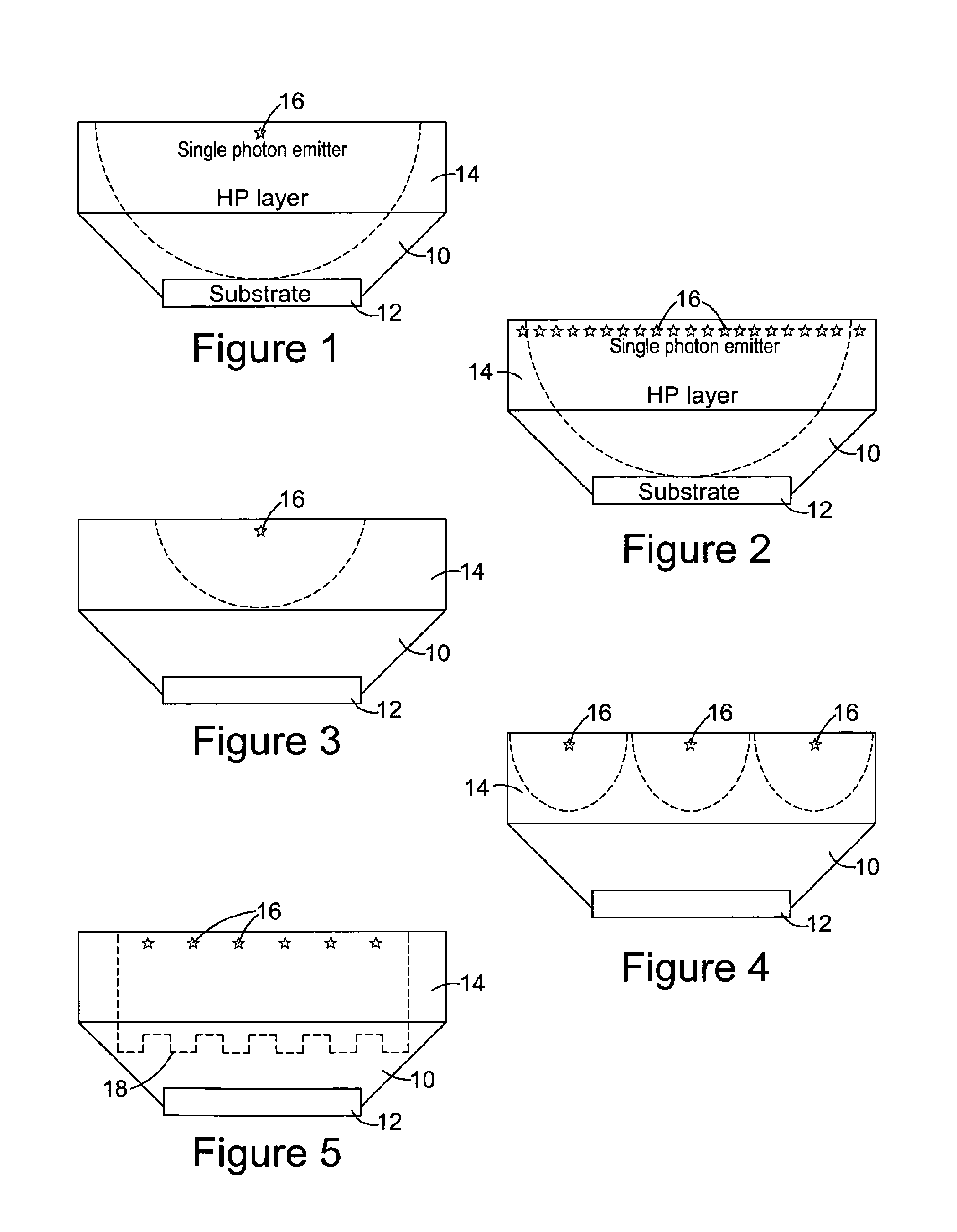Diamond optical element
a technology of optical elements and diamonds, applied in the field of diamond optical elements, can solve the problems of shortening the “decoherence time, weak single photon emission of defects in such materials, and lengthening the tim
- Summary
- Abstract
- Description
- Claims
- Application Information
AI Technical Summary
Benefits of technology
Problems solved by technology
Method used
Image
Examples
example synthesis
[0105]A synthetic type Ib HPHT diamond plate with a pair of approximately parallel major faces within approximately 5° of (001) was selected. The plate was fabricated into a square substrate suitable for homoepitaxial synthesis of single crystal CVD diamond material by a process including the following steps:
[0106]i) laser cutting of the substrate to produce a plate with all edges;
[0107]ii) lapping and polishing the major surface upon which growth is to occur, the lapped and polished part having dimensions about 3.6 mm×3.6 mm by 535 μm thick, with all faces {100}.
[0108]The defect level at or below the substrate surface is minimised by careful preparation of the substrate as disclosed in EP 1 292 726 and EP 1 290 251. It is possible to reveal the defect levels being introduced by this processing by using a revealing plasma etch. It is possible routinely to produce substrates in which the density of defects measurable after a revealing etch is dependent primarily on the material qual...
PUM
| Property | Measurement | Unit |
|---|---|---|
| decoherence time T2 | aaaaa | aaaaa |
| thickness | aaaaa | aaaaa |
| aspect ratio a/b | aaaaa | aaaaa |
Abstract
Description
Claims
Application Information
 Login to View More
Login to View More - R&D
- Intellectual Property
- Life Sciences
- Materials
- Tech Scout
- Unparalleled Data Quality
- Higher Quality Content
- 60% Fewer Hallucinations
Browse by: Latest US Patents, China's latest patents, Technical Efficacy Thesaurus, Application Domain, Technology Topic, Popular Technical Reports.
© 2025 PatSnap. All rights reserved.Legal|Privacy policy|Modern Slavery Act Transparency Statement|Sitemap|About US| Contact US: help@patsnap.com



